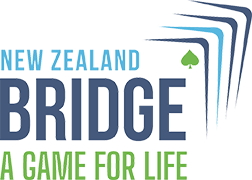
Law 23a
I find Law 23a difficult to interpret, it seems obvious when I read it but not obvious when I look at the examples that I find.
1 - has the same or similar meaning,
1C 2H 1D corrected to 3C would that be a comparable call. Say the 1D caller has 6-9 pts with 4C and 5D or 4C and 4D
2 - Defines a subset of the possible meanings, is even trickier
so if a call shows 2 suits, does the subset also have to show 2 suits,
is a call that says S and C comparable to a call that says S and another or vice versa
Can a call showing a 4C suit replace a call that show a 5C suit
I read somewhere that a 1C American Standart opening with 2+ C has no comparable call as it does not show a suit, but 2+ shows two or more the opener could have more, from my point of view the 1C opening really just denies a 5C major so a replacement of H or S would not be possible.
Is there any straight forward table available online that shows a call with its comparable calls
Thanks,
Marion
Latest Posts on this Thread
- MARION ARLIDGE11 Nov 2020 at 05:19PM
I had one example that said that 3C Stayman showing 5/4 in the majors was comparable with a 2C stayman showing a 4/4, from my point of view these two calls would not be comparable calls
- NICK WHITTEN11 Nov 2020 at 08:59PM
Hi Marion
I prefer to look at it this way:
If every possible hand which would make the substituted call would also have made the cancelled call then it is comparable
But one generally allows for minor differences with Law 23C available if it unexpectedly turns out the difference was significant and assisted the offenders to get a better result.
For example a opening pass at partner's turn to call
Partner then opens 1 of something
Any call which is limited to below opening strength is comparable (such as single raise or 1NT (both being 6-9), and a jump raise or 2NT (both 10-12) would be close enough to be deemed comparable)
Every hand which would have made those calls would have passed as opener (not ALWAYS the case though; you might respond 1NT to 1S with S: xx H: Kx D: KQxxxx C: xxx where that hand would have opened 2D as dealer not pass. In the highly unlikely event the knowledge that hand is excluded assists the side to get the a better result then Law 23C kicks in.
Any bid such as a new suit COULD be opening strength so is therefore NOT comparable
So in your first example if 1D shows 6+ points and 4+ diamonds
any call within that range of strength and distribution would be comparable
for example if 3D in that sequence would show say 11+ points and 5+ diamonds then that is comparable
If a call shows two specified suits say S and D then the replacement call would also need to show those two suits
If a call shows two suits, but only one specified say S and another then a replacement call showing S and D is comparable
If a call shows ONE of two suits, (such as a multi opening showing (6 of) H or S) then a replacement call showing (6 of) S is comparable
(all of these subject to the strength being similar of course)
As for opening 1C (2+) out of turn:
If you actually had 5 clubs a 2C overcall (over 1 of something by the opponent) would be comparable, even (as is usual) if it has a slightly lower minimum strength than an opener
Apart from that there would be no comparable call available either responding to partner OR overcalling the opponents opener
There are some examples in "Commentary on the 2017 laws" in the directing tab on this website - GILES HANCOCK13 Nov 2020 at 06:20PM
2NT - 2C ooops 3C has been described as having the same purpose, asking about majors, so comparable. (Kelso)
I have articles and examples from Kelso-Duschek (ABDUA); Gordon Rainsford (EBU); Ton Kooijman (WBF).
Click here to log in.

